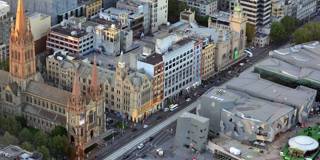Typically, a growing city expands into suburban sprawl. But as Australia’s second-largest city shows, growth can also occur by making better use of existing infrastructure, creating an environment that is better for residents and the planet.
BOSTON – Melbourne is not the most distinctive of Australia’s cities. It does not have Sydney’s sandy beaches or Brisbane’s rugged, “Crocodile Dundee” appeal. Lying on a flat plain, crossed by a meandering river, it is an urban agglomeration of some 10,000 square kilometers (3,681 square miles) – six times the size of London and 12 times the size of New York City – consisting of a dense urban core surrounded by sprawling suburbs.
Yet Melbourne often tops international quality-of-life rankings. It has a rich street culture and a thriving arts scene; the central business district (CBD) is crowded at all times, as are the new public spaces created from the conversion of former brownfields, such as Federation Square and the South Wharf area along the Yarra River.
The story of Melbourne’s success can be traced to a municipal master plan and one of its main proponents, Rob Adams. Born in Zimbabwe, Adams studied architecture at the University of Cape Town, where he developed a singular concept that would turn him into a key player in the transformation of Melbourne.

BOSTON – Melbourne is not the most distinctive of Australia’s cities. It does not have Sydney’s sandy beaches or Brisbane’s rugged, “Crocodile Dundee” appeal. Lying on a flat plain, crossed by a meandering river, it is an urban agglomeration of some 10,000 square kilometers (3,681 square miles) – six times the size of London and 12 times the size of New York City – consisting of a dense urban core surrounded by sprawling suburbs.
Yet Melbourne often tops international quality-of-life rankings. It has a rich street culture and a thriving arts scene; the central business district (CBD) is crowded at all times, as are the new public spaces created from the conversion of former brownfields, such as Federation Square and the South Wharf area along the Yarra River.
The story of Melbourne’s success can be traced to a municipal master plan and one of its main proponents, Rob Adams. Born in Zimbabwe, Adams studied architecture at the University of Cape Town, where he developed a singular concept that would turn him into a key player in the transformation of Melbourne.